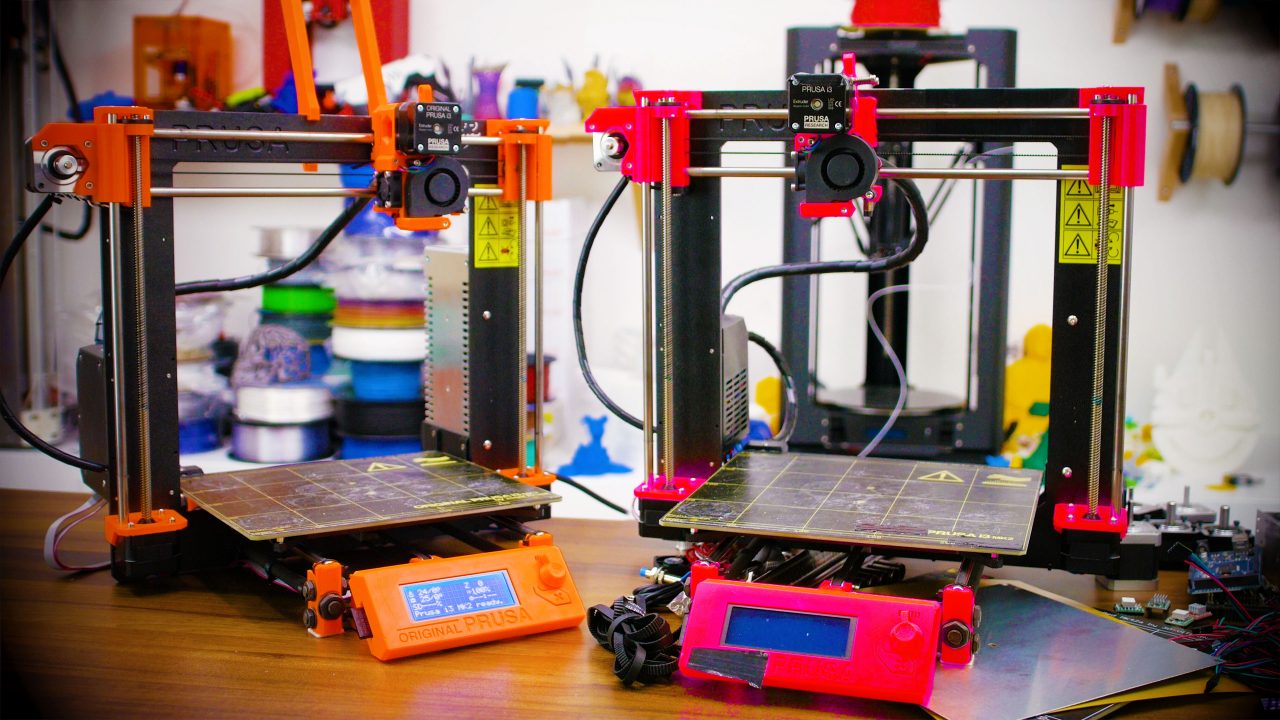Um Clone da Impressora Prusa, e ainda por cima, o mais Económico possível?
É BOM!
Vejam aqui como se faz, e assim, mais gente poderá ter uma Impressora 3D...
Ou, os que já as tèem, podem ter ainda mais!
LOL
Building the cheapest possible Prusa i3 MK2
Tom
What is the cheapest possible, real 3D printer you can buy without making one compromise after the other? That’s the question we’re asking by building a Prusa i3 MK2-style 3D printer that comes with most of the important features of the original one from Josef Prusa and requires a bit more work for sourcing and building the machine, but most importantly, we’re going to build it only with the most affordable set of parts.
This page will serve as a hub for part lists and build guides as the project moves along! All build videos and the accompanying project videos have been organized into a neat playlist!
https://toms3d.org/2017/02/23/building-cheapest-possible-prusa-i3-mk2/
Por incrível que pareça, podem fazer ISTO, com Placa de Espuma de Plástico, e por isso, é de aproveitar, malta!
Recriação Histórica, Carnavais e Espectáculos, Montras de Lojas, um sem-fim de usos...
Recreating an Antique Divers Helmet From Foam
LostWax
I love the ocean. I can sit on the beach all day just watching the waves do their wavey thing. Sadly, I happen to live in the middle of the Canadian prairies. No ocean to watch here. But there's always the world of make-believe, and what better way to get in the ocean vibe than with an amazing deep sea diver costume. I created this costume pattern to try and recreate the feel of the classic "Mark V" dive helmet which has become an iconic image of divers and the sea. It was used by the U.S. Navy from 1916 until 1984! Let's make one of our own.
https://www.instructables.com/id/Recreating-an-Antique-Divers-Helmet-From-Foam/
Eis mais algo de simplesmente espectacular, na sua simplicidade, uma Ferramenta para dobrar aquele Cartão que podem ter por aí, para uma série de novos usos:
Cardboard Bender
nml235l
A tool is something that makes life easier and more convenient. I have got a rather huge mass of cardboard (a cause of a new furnishings :-)) and appropriate number of ideas to make something with it (Bag for Containers). One problem is bend operations. Cardboard plates have a multiply layer (as usual) so I get clumsy splits during bending. To prevent such behavior I decided to flatten cardboard according the bend line. At this moment we get situation for a ... NEW TOOL. How to make flattening along the path? Certainly, using a one of the ancient inventions – the Wheel. We need only move the wheel (roller) along the path on cardboard surface with giving insignificant pressure. This principle we use in home preservation to connect bank and cover (or let's remember about the roller-machine for road construction). Concept of a tool is very simple: roller (wheel) and handle – nothing more.
https://www.instructables.com/id/Cardboard-Bender/
Este é um projecto que vai ser a alegria de muita gente, ainda mais porque é Open Source, todas as peças e planos à mão, para todos tentarem...
Uma Empilhadora em miniatura, tele-controlada, até a partir dos vossos Smartphones!
Dá para a mandar ir buscar os chinelos, do sofá...
Arduino ForkliftLeon van den BeukelThis is a video about making a remote controlled forklift car. I've used Fusion 360 to design and create the 3D printed parts and CNC machining templates. If you don't have a CNC machine you can also use a jigsaw to cut out the wooden parts. I've provided the cutting templates, sources and 3D printing STL files on my GitHub page:
Este Gerador de Sinais para Rádio-Frequência, vai fazer a alegria dos Macanudos, aquela malta dos Rádio-Amadores, um equipamento que serve para afinar os vossos emissores:
RF Signal Generator
Milen
The RF signal generator is a must to have tool when playing with radio receivers. It is used to tune a resonant circuits and adjust the gain of different RF stages. Very useful feature of the RF Signal generator is its modulation capability. If it can modulate the frequency amplitude or frequency makes it non replaceable tool for RF design works.
Some time ago I have designed an AM modulator, which could be used for such purposes. It works fine in some cases, but it has the disadvantage to be not able to work as standalone device. It requires additionally power supply module and two signal generators - for the RF carrier frequency and for the modulating signal. This makes it inconvenient to work with it outside the house. I decided to create an RF signal generator working as fully functional stand alone device. Instead to base the architecture on the modern DDS chip, I decided to use the analog approach. As a basis I have chose an existing RF signal generator published here. Similar design is described also here. The credits for this design go to their authors. I repeated mainly the first design adding additional digital frequency counter instead the not very precisely radial scale analog calibration.
https://www.instructables.com/id/RF-Signal-Generator/






